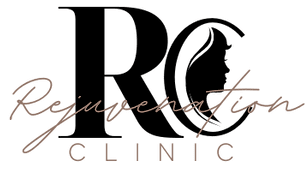Losing significant weight or going through pregnancy represents a major achievement and life milestone. However, many people find themselves dealing with an unexpected challenge afterward: sagging skin that doesn’t bounce back to its original tightness. This loose skin can affect confidence and make you feel like your transformation isn’t complete.
Sagging skin occurs when the skin loses its elasticity and can’t contract back to fit your new body shape. During weight gain or pregnancy, skin stretches to accommodate increased volume. When that volume decreases rapidly—whether through weight loss or postpartum recovery—the skin may not have enough time or structural support to shrink back effectively.
Understanding how to treat sagging skin effectively requires knowing your options and choosing the right approach for your specific situation. This comprehensive guide will walk you through proven methods, from non-invasive treatments to surgical solutions, helping you make informed decisions about restoring skin tightness and achieving the results you desire.
Understanding Why Skin Becomes Saggy
Several factors contribute to skin losing its firmness after weight loss or pregnancy. Age plays a significant role, as older skin contains less collagen and elastin—the proteins responsible for skin elasticity and strength. The amount of weight lost or gained also matters; more dramatic changes typically result in more noticeable sagging.
Genetics influence how well your skin recovers naturally. Some people have naturally more resilient skin that bounces back more effectively, while others may struggle with loose skin even after modest weight changes. The speed of weight loss also impacts skin recovery—rapid weight loss gives skin less time to adapt compared to gradual changes.
Pregnancy presents unique challenges because hormonal changes affect skin structure. The hormone relaxin, which helps prepare the body for childbirth, can reduce skin elasticity. Additionally, the stretching that occurs during pregnancy often affects deeper skin layers, making recovery more complex than weight loss alone.
Non-Invasive Treatment Options
Topical Treatments and Skincare
While topical treatments alone cannot dramatically tighten severely loose skin, they can support skin health and provide modest improvements. Look for products containing retinoids, which stimulate collagen production and improve skin texture over time. Vitamin C serums help protect existing collagen and support new collagen synthesis.
Peptide-based creams can signal skin cells to produce more structural proteins. Hyaluronic acid helps maintain skin hydration, which is crucial for maintaining elasticity. Body lotions containing firming ingredients like caffeine may provide temporary tightening effects through improved circulation.
Consistent use of sunscreen prevents further collagen breakdown and protects skin from additional damage that could worsen sagging. While these approaches require patience and realistic expectations, they form an important foundation for any skin-tightening regimen.
Professional Body Treatments
Several professional treatments can help address mild to moderate skin laxity without surgery. These treatments work by stimulating collagen production and improving skin structure from within.
Radiofrequency Treatments
Radiofrequency energy heats deeper skin layers, triggering collagen production and tightening existing fibers. Treatments like Exion combine monopolar radiofrequency with artificial intelligence for precise energy delivery. This technology can achieve significant improvements in skin texture while minimizing the discomfort typically associated with deep tissue treatments.
Results typically become noticeable about one month after treatment, with the most significant improvements appearing three months after the final session. Multiple sessions are usually required for optimal results.
Ultrasound Therapy
Focused ultrasound treatments deliver energy to specific depths within the skin, stimulating collagen renewal without damaging the surface. These treatments can be particularly effective for facial sagging and mild body laxity.
Laser Treatments
Various laser technologies can improve skin tightness by stimulating collagen production. Fractional lasers create controlled micro-injuries that trigger the skin’s healing response, leading to new collagen formation and improved texture.
Advanced Professional Treatments
Injectable Solutions
Injectable treatments offer more dramatic results than topical approaches while remaining less invasive than surgery.
Profhilo Treatment
Profhilo represents an innovative approach using bio-remodeling hyaluronic acid that spreads beneath the skin to stimulate collagen and elastin production. Unlike traditional fillers that add volume, Profhilo improves skin quality, hydration, and firmness from within.
This treatment involves a series of injections at strategic points, allowing the hyaluronic acid to distribute naturally throughout the treatment area. Results develop gradually over several weeks as new collagen forms.
Plasma Treatments
Plasma facelift treatments use the patient’s own blood to create platelet-rich plasma (PRP), which is then injected or applied to treatment areas. The growth factors in PRP can stimulate tissue regeneration and improve skin quality over time.
Combination Therapies
Many practitioners now combine multiple treatments for enhanced results. For example, radiofrequency treatments might be paired with injectable solutions to address both immediate tightening and long-term collagen building. These combination approaches can provide more comprehensive improvements than single treatments alone.
Surgical Options for Severe Sagging
When non-invasive treatments cannot achieve desired results, surgical options may be necessary. These procedures physically remove excess skin and reposition remaining tissue for a tighter appearance.
Body Contouring Surgery
Procedures like tummy tucks, arm lifts, and thigh lifts directly address loose skin by removing excess tissue. These surgeries require significant recovery time but provide the most dramatic and permanent results for severe sagging.
Facelift and Neck Lift
For facial sagging, surgical lifting procedures can restore more youthful contours by repositioning skin and underlying tissues. Modern techniques focus on creating natural-looking results with well-hidden incisions.
Mini Procedures
Less extensive surgical options, such as mini tummy tucks or limited arm lifts, can address moderate sagging with shorter recovery periods than full procedures.
Creating Your Treatment Plan
Choosing how to treat sagging skin depends on several factors: the severity of skin laxity, your budget, available recovery time, and personal preferences regarding invasive procedures.
Mild Sagging: Start with consistent skincare, professional treatments like radiofrequency or ultrasound, and injectable solutions. This approach often provides satisfactory results with minimal downtime.
Moderate Sagging: Consider combining multiple non-invasive treatments over time. Some people achieve significant improvements through dedicated professional treatment series.
Severe Sagging: Surgical options may be necessary to achieve desired results. However, combining surgery with ongoing non-invasive treatments can help maintain and enhance surgical outcomes.
Frequently Asked Questions
How long does it take to see results from non-invasive treatments?
Most non-invasive treatments show initial results within 4-6 weeks, with continued improvement over 3-6 months as new collagen develops. Multiple sessions are typically needed for optimal results.
Are these treatments suitable for all skin types?
Clinical studies have shown that treatments like fractional radiofrequency are safe and effective for all skin types. However, your provider will customize the treatment specifically for your skin characteristics.
How do I know which treatment is right for me?
A consultation with a qualified aesthetic provider can assess your specific concerns and recommend the most appropriate treatment plan. Factors like skin thickness, degree of laxity, and your goals all influence treatment selection.
Can I combine different treatments?
Yes, many people achieve better results by combining complementary treatments. Your provider can design a comprehensive plan that addresses your concerns from multiple angles.
Taking the Next Step Toward Firmer Skin
Addressing sagging skin after weight loss or pregnancy requires patience, realistic expectations, and often a combination of approaches. The good news is that numerous effective options exist, from simple skincare routines to advanced professional treatments.
Start by consulting with a qualified aesthetic provider who can assess your specific situation and recommend the most appropriate treatments for your goals and budget. Remember that skin improvement is a gradual process, and consistent care will yield the best long-term results.
Don’t let loose skin diminish the pride you should feel in your weight loss achievement or the miracle of pregnancy. With the right treatment approach, you can achieve the firm, confident appearance that matches your inner transformation.

